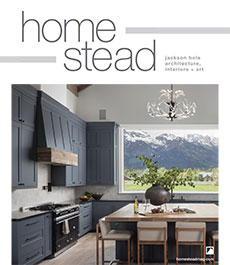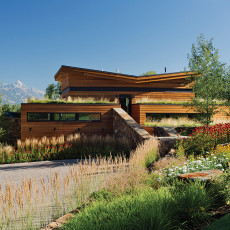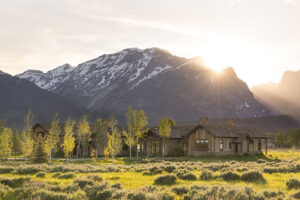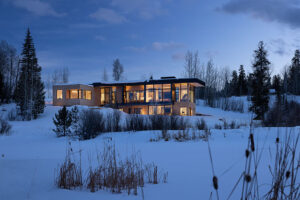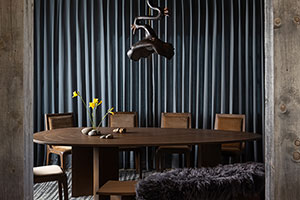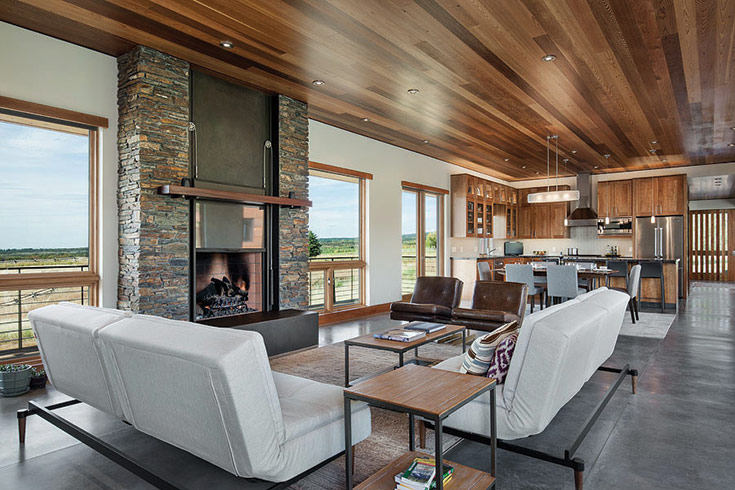
WARD + BLAKE ARCHITECTS
WardBlakeArchitects.com
Story By
Liz Prax
Photos By
Roger Wade + Paul Warchol +
Douglas Kahn
With experience comes courage—courage to push boundaries, to meld new ideas with time-tested fundamentals, to start trends rather than follow them. Since 1996, Ward + Blake Architects has embodied such courage, integrating structural quality, livability and energy efficiency into a holistic design approach that builds homes to last—and to delight.
One of the first characteristics you’ll notice about a Ward + Blake home is the way it blends organically with its natural surroundings. “You can see the layout of the building is pretty much hand-in-glove with what the land is telling us,” says architect Tom Ward. “Basic site analysis starts with topography and ends with orientation.” Factors like wind, precipitation, storm-advancement corridors and solar orientation all play a role.
Roof overhangs and other building components manage sun exposure, allowing the home to “respond slowly to seasonal changes, rather than suddenly being sweltering in summer or cool in the wintertime.”
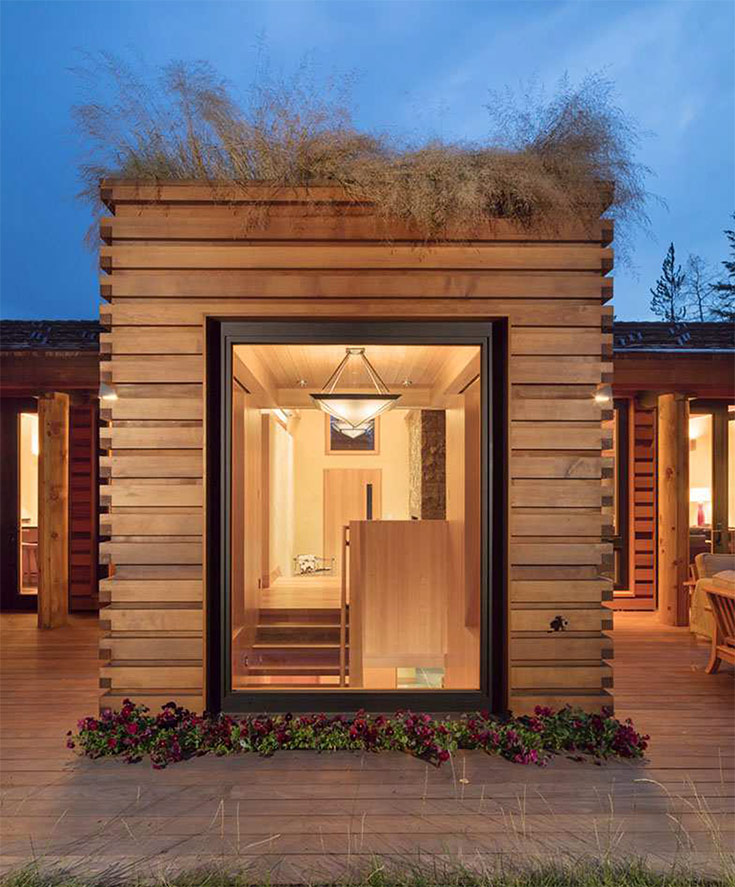
“If we address fundamental principles like that, when we start applying technology to heating and cooling a home, the demands on the structure become a little easier and less odious,” Ward continues. The caliber of today’s architectural tools is remarkable, he adds. “One of the biggest things is windows and doors. The ones we’re putting in homes these days are so airtight, if you inverted the houses and put them in Jackson Lake, they’d float!”
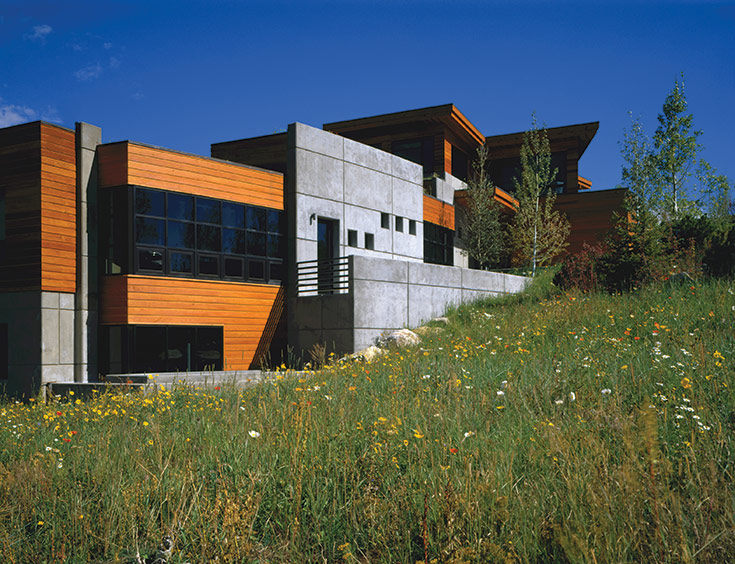
Installing high-tech systems like a ground-source heat pump, which extracts latent heat from the earth, reduces energy consumption significantly.
“Energy conservation is an important part of the equation, but the livable environment is too,” he says. Today’s homes are sealed so tightly that they trap in unhealthy air pollutants, such as upholstery off-gasses. To rectify this problem, Ward + Blake installs energy recovery units, which pull domestic air out while bringing fresh air in from outside, exchanging the heat from the former to the latter in the process, so there’s no drop in room temperature. This, combined with humidity control, makes a home healthier and more comfortable for its occupants.
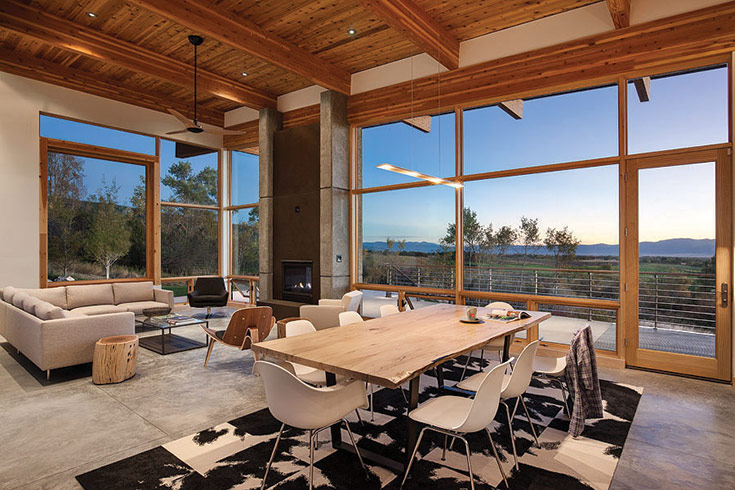
Another design element that Ward + Blake employs with great passion is materiality. For example, its architects consider traditional materials, such as wood and stone, in new and different ways. After experiencing extremely volatile winters like this past one, which brought sudden, dramatic temperature swings, “you start to gain appreciation for more traditional materials that have stood the test of time,” Ward says.
The Ward + Blake team also creates a balanced, pleasing feel in homes by using materials with contrasting textures and colors that aren’t typically used together: rough-cut rustic slate and polished Carrara marble; board-formed concrete and hand-milled cedar siding; manipulated and shaped native fir logs next to concrete and cedar. Ward explains, “When you juxtapose some materials against each other, they both look better and they bring inherent characteristics of each material more to the fore.”
Together, all of these elements form a veritable whole—a long-lasting, energy-efficient home that both comforts and delights.
